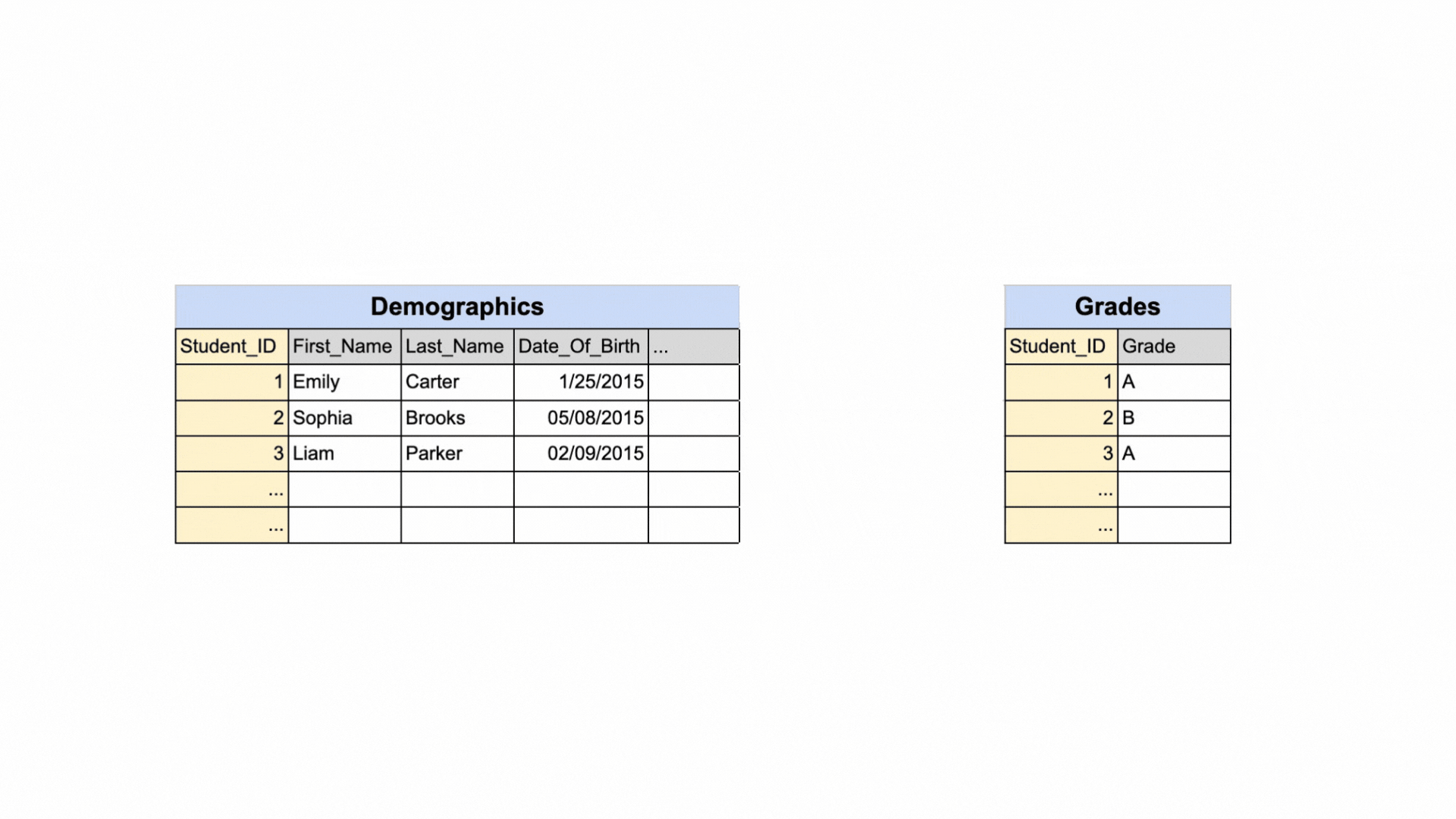
Your data, our passion.
Snack-Sized Data Basics
Data & Databases: An Introduction

Before diving into our new Snack-Sized Data Basics series 🎉, let’s start by defining what data is. At its core, data is simply, information.
Data is typically stored in something called a database. A database contains tables organized by rows and columns.

In this series, we’ll particularly focus on relational databases. Relational databases are comprised of tables that are related to each other.
What do I mean by that? Let’s take a look at an example.
Let’s say we have a school, and each student has a unique student ID.

Let’s say we have two tables in our database. One named Demographics, and the other Grades.
-
The Demographics table contains information such as student first names, last names, dates of birth, and of course, student IDs.
-
The Grades table stores student grades, as well as their corresponding student IDs.


The beauty of relational databases is that those two tables, Demographics and Grades, can be connected via the student ID. Therefore, to get all student names, dates of birth, and grades simultaneously, you can easily join the two tables using the student ID.